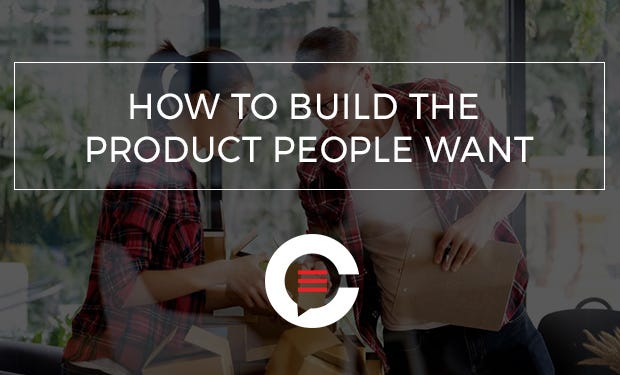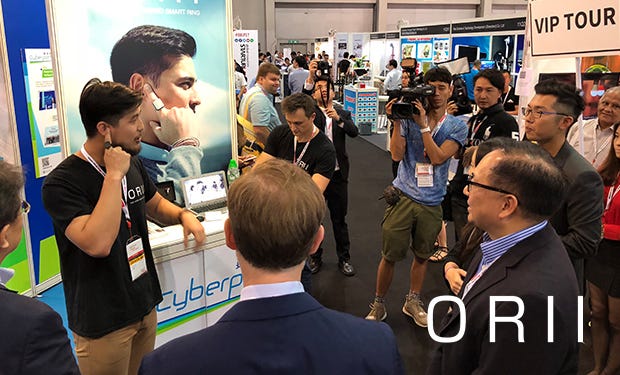Latest news about Bitcoin and all cryptocurrencies. Your daily crypto news habit.
In the realm of product development, ideas — even the wildest ones — are the stepping stone to innovation. And seeing that idea come to fruition is rewarding, but the transformation of an idea to a successful product is not always a simple one to navigate. Thankfully, in today’s digital world, eCommerce platforms make it easier than ever before to connect consumers to their products. Why can this serve as such an advantage? Well, it’s no surprise that consumer buying power is the true market validation for a product. But testing the market to understand what consumers respond to often comes at great costs and takes a lot of time. So how do we build the product people actually want in a cost-effective way and more importantly, in a way that works?
For one, find your ambassadors — those who have a fresh pair of eyes and external insight to offer. These are your product advocates who can partner with you to solve the same problems that you want to target. They serve a key role in the product development process by testing your ideas, pointing out real pain points, and balancing your expectations. So invite them into the creator space and open the product up to their feedback and criticism. This will expedite the trial and error process by quickly honing your focus in on what works and what doesn’t.
A company that has been doing this particularly well is ORII, creators of a smart ring that can directly connect to your phone. The ORII team found their ambassadors while interfacing with attendees at electronic convention floors. They constantly debut updated prototypes at these conventions for attendees to test. And each new change made to their prototype is driven by the multiple face-to-face exchanges with the convention attendees, many of whom have become their backers. They’ve clearly made it their strategy to craft their product together with their ambassadors, and it’s been working for them. So much so that people who love their product and vision have even joined their ranks as team contributors and partners. Introducing the products earlier to a smaller, more refined audience first provides creators with the opportunity to encounter and exchange ideas with well-informed sources who believe in your product.
Mindful development is another key component to building a product that the consumers want. Mindful development means to identify the audience and keep their perspective in mind all throughout the product development process. And what better way to understand the consumer than to directly dialogue with them yourself? The best way to start here is to identify a platform or channel to communicate with users in a way that best suits your product. This can range from social media platforms like Facebook groups and forums, marketing platforms like Crowdcreate, or even simple surveys through emails. All serve as mediators of this dialogue while providing the infrastructure to reach larger scale audiences. In an age where consumer feedback is so readily available to the public, the consumer’s review can really make or break your product. This is why it is so important to, one, establish an effective means of communication with your audience, and two, actively listen to what users have to say. The emphasis to note here is to actively listen — changes made during product development should be driven by what you’re hearing from your larger scale audience. After all, a consumer driven product is more likely to thrive in a consumer driven market.
Giving your consumers a voice in the product development process ultimately serves to create a long-standing relationship with users. The time you spend listening and responding is what establishes the long-term trust that extends your products longevity. When consumers feel heard, they become engaged in the product’s journey. They want to see the product succeed. This can be seen when startups choose to launch a second campaign as an updated version of their initial product. In many crowdfunding campaigns, customers will often comment “I like the the product, but I wish it had x feature” or “I wish they did x better.” After taking in consumer insights about their version one product, these companies create an even better version two product, addressing concerns brought up by their users. Many startups and designers often become so desperately afraid to fail that the pursuit of presenting the perfect product to consumers ends up isolating them instead. The result is a loss of customer interest and trust, which ultimately makes for an irrelevant product.
When building a product, motivating your users to create alongside you is the most effective and most powerful way to build the product that people want. Consider this, if every detail and feature is exactly what you’ve wanted, then you’ve built a product for one user — yourself. But if you’ve listened to the feedback and validation of thousands, then you have thousands of customers waiting to buy your product. Remember, it is not always about building the perfect product, but building a product that resonates with your consumer and keeps the consumer’s needs at the forefront.
How To Build The Product People Want was originally published in Hacker Noon on Medium, where people are continuing the conversation by highlighting and responding to this story.
Disclaimer
The views and opinions expressed in this article are solely those of the authors and do not reflect the views of Bitcoin Insider. Every investment and trading move involves risk - this is especially true for cryptocurrencies given their volatility. We strongly advise our readers to conduct their own research when making a decision.

